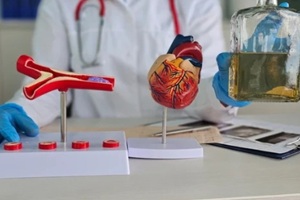 Understanding how smoking and alcohol use affect cholesterol levels helps you make informed decisions about your heart health. Both habits influence your blood lipid profile differently, with smoking consistently worsening your cholesterol numbers while alcohol’s effects depend entirely on how much and how often you drink.
Understanding how smoking and alcohol use affect cholesterol levels helps you make informed decisions about your heart health. Both habits influence your blood lipid profile differently, with smoking consistently worsening your cholesterol numbers while alcohol’s effects depend entirely on how much and how often you drink.
Research indicates that these substances create distinct patterns in your total cholesterol, HDL cholesterol, LDL cholesterol, and triglyceride levels, which directly impact your risk of cardiovascular disease.
How Alcohol Affects Your Cholesterol Numbers
Alcohol consumption produces complex effects on your cholesterol profile that change based on your drinking patterns. Light to moderate drinking typically raises both your total cholesterol and HDL cholesterol levels, although the HDL increase often outpaces the rise in total cholesterol. This means your HDL cholesterol percentage of total cholesterol actually improves with moderate alcohol consumption.
Your LDL cholesterol response to alcohol depends on whether you smoke. Non-smokers who drink alcohol experience increases in LDL cholesterol levels. However, people who smoke more than 10 cigarettes daily see their LDL cholesterol decrease when they drink alcohol, though this doesn’t provide health benefits due to smoking’s other harmful effects.
Moderate alcohol consumption generally doesn’t affect your triglyceride levels significantly. However, heavy drinking pushes triglycerides higher, contributing to increased cardiovascular disease risk. Consuming eight or more drinks daily for women and 10 or more drinks daily for men creates a two- to eight-fold increase in high triglyceride and total cholesterol levels.
The protective effects people associate with moderate drinking stem from improvements in HDL cholesterol. Higher HDL levels help remove excess cholesterol from your arteries and transport it to your liver for processing and elimination. This reduces plaque formation in your blood vessels and may lower your risk of heart disease when drinking remains moderate.
How Smoking Changes Your Lipid Profile
Smoking cigarettes creates immediate and long-term changes to your cholesterol levels that increase your heart disease risk. When you smoke, the chemicals in tobacco lower your HDL, or “good” cholesterol.
Smoking raises your LDL cholesterol levels and total cholesterol concentrations. LDL cholesterol, known as “bad” cholesterol, accumulates in your artery walls and forms plaque that restricts blood flow to your heart and other organs. This process, called atherosclerosis, significantly increases your risk of heart attack and stroke.
Smoking also elevates your triglyceride levels. Triglycerides are fats in your blood that cause arterial walls to thicken. The combination of lower HDL cholesterol, higher LDL cholesterol, and elevated triglycerides creates a particularly dangerous lipid profile for your cardiovascular system.
The chemicals in cigarette smoke also damage your artery walls directly, making them more susceptible to cholesterol buildup. This damage occurs even with light smoking, meaning there is no safe level of tobacco use when it comes to protecting your cholesterol levels and heart health.
The Combined Impact of Smoking and Drinking
 When you smoke and drink, these habits interact in ways that often eliminate any potential benefits from moderate alcohol consumption. Smoking, even in small amounts, can completely negate the HDL cholesterol improvements that moderate drinking might provide. A study of nearly 47,000 men found optimal cholesterol profiles in non-smoking moderate drinkers.
When you smoke and drink, these habits interact in ways that often eliminate any potential benefits from moderate alcohol consumption. Smoking, even in small amounts, can completely negate the HDL cholesterol improvements that moderate drinking might provide. A study of nearly 47,000 men found optimal cholesterol profiles in non-smoking moderate drinkers.
This group achieved the best balance of low total cholesterol, low LDL cholesterol, low triglycerides, and high HDL cholesterol. Heavy drinkers and smokers consistently showed the worst lipid profiles regardless of their other health behaviors.
Your cardiovascular risk multiplies when you combine smoking with heavy drinking. Both habits raise your blood pressure, increase inflammation in your blood vessels, and exacerbate your overall risk factors for heart disease. The combination creates particularly dangerous effects on your triglyceride levels and arterial health.
Even if you drink moderately but smoke regularly, your cholesterol profile suffers significantly compared to non-smokers who drink similar amounts. This interaction explains why healthcare providers emphasize smoking cessation as the single most important step for improving cardiovascular health, regardless of your drinking habits.
Understanding Safe Consumption Levels
According to current medical advice, moderate drinking is considered to be a single drink per day for women and a maximum of two drinks per day for men. One standard drink means approximately twelve ounces of beer, four ounces of wine, one and a half ounces of 80-proof liquor, or one ounce of 100-proof liquor.
Heavy drinking patterns that include four or more drinks daily for women and five or more drinks daily for men. Binge drinking episodes also create significant spikes in your triglyceride and total cholesterol levels that persist beyond the drinking session.
No safe level exists for smoking. Unlike alcohol, where moderate consumption may provide some cardiovascular benefits, tobacco use at any level worsens your cholesterol profile and increases heart disease risk. Even occasional social smoking produces measurable negative effects on your HDL and LDL cholesterol levels.
Women process alcohol differently than men due to lower levels of the enzyme alcohol dehydrogenase and generally smaller body size. This means women absorb more alcohol into their bloodstream and experience stronger effects from the same amount of alcohol consumption.
The Benefits of Making Changes
Reducing alcohol consumption and quitting smoking may produce improvements in your cholesterol profile and overall cardiovascular health. One study, for example, showed that people who drink significant amounts of alcohol, meaning a minimum of 8 drinks for women and 10 drinks for men, are two to eight times more likely to have high triglycerides and cholesterol, which are risk factors for cardiovascular disease.
Smoking cessation can begin to improve your cholesterol numbers within weeks of quitting. Your HDL cholesterol levels start rising, while your LDL cholesterol and triglyceride levels begin to decrease. Your blood becomes less thick, your arteries become more flexible, and your circulation improves throughout your body.
The combination of quitting smoking and moderating alcohol consumption may result in significant improvements in your lipid profile. Your body begins to heal arterial damage, your blood pressure often decreases, and your overall risk of cardiovascular disease may drop substantially within the first year of making these changes.
Cholesterol Management at Imperial Center Family Medicine
 Imperial Center Family Medicine understands how smoking and alcohol use affect your cholesterol levels and provides broad monitoring and treatment to help you pursue excellent cardiovascular health. Our experienced providers work with you to develop personalized strategies for controlling your cholesterol through lifestyle modifications and medical interventions when necessary.
Imperial Center Family Medicine understands how smoking and alcohol use affect your cholesterol levels and provides broad monitoring and treatment to help you pursue excellent cardiovascular health. Our experienced providers work with you to develop personalized strategies for controlling your cholesterol through lifestyle modifications and medical interventions when necessary.
Contact us today at 919-873-4437 to schedule your cholesterol screening and discuss how we can help you protect your heart health.
